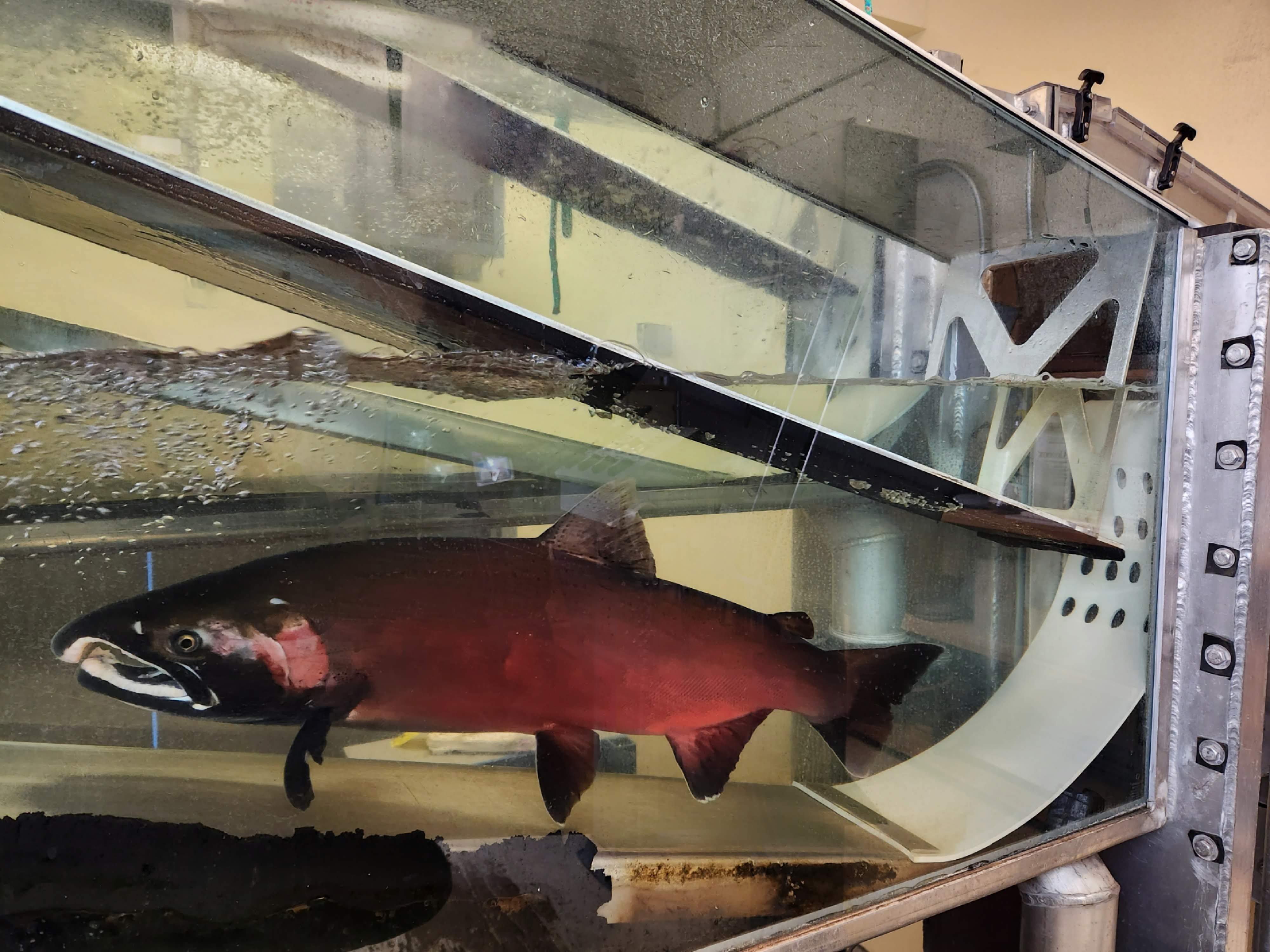Record numbers of adult salmon return to PGE’s Clackamas River hydropower project

Nov. 14, 2023
ESTACADA, Ore. (Nov. 14, 2023) – Salmon and steelhead broke several records this fall at Portland General Electric’s Westside Hydropower Project on the Clackamas River. This combination of achievements is in-part a culmination of efforts over the past 17 years to modernize and improve fish passage systems – the infrastructure that enables juvenile and adult fish to safely swim past a series of hydroelectric dams. In addition to investments in state-of-the-art facilities, PGE has worked alongside partners in the Clackamas River Basin to enhance habitat for the fish and wildlife that depend on a thriving river ecosystem.
Together, these actions are contributing to historic returns of adult coho and Chinook salmon, which migrate to the Pacific Ocean as juveniles and swim back to the Clackamas as adults. More than 17,000 adult coho returned to North Fork Dam this fall, marking the third consecutive year of record coho returns – an unprecedented stretch of positive results not seen since dam construction. Additionally, PGE biologists counted the largest return of wild spring Chinook salmon to the Clackamas River since data collection began in 1958, passing nearly 5,000 fish above North Fork Dam to the wild fish sanctuary of the upper Clackamas.
Since 2006, PGE has made significant investments in safe passage systems for adult salmon and steelhead, including a new fish ladder, a more efficient adult trap and a state-of-the-art hands-free sorting facility. Together, these improvements have allowed fish to pass upstream quickly and with reduced handling, allowing them to access the cooler waters of the upper Clackamas Basin earlier in the year when conditions are more beneficial to both spawning and survival.
“With more returning adults spawning upstream, we’re seeing larger generations of juvenile fish headed to the ocean to start the cycle over again,” said Nick Ackerman, Senior Biologist for PGE at the Westside Hydropower Project. Compounded by recent adult returns, more juvenile fish passed through PGE’s bypass system than ever before this year, safely avoiding three dams on their way to the Pacific Ocean. An improved pipeline ensures that fish are passing through the project quickly, allowing them to complete their migration when the lower Willamette River is cooler and predators are less active.
In addition to infrastructure investments and habitat enhancements, favorable marine conditions for the past three years have helped fish grow bigger at a faster pace during their time in the Pacific Ocean, improving their chances of survival before the journey back home to the Clackamas. With more robust and resilient fish populations, PGE hopes to see ongoing success for years to come, even as these ocean conditions change.
“We’re grateful to everyone working alongside us to create healthier habitats in the Clackamas Basin, including environmental nonprofits, Tribes and fisheries managers like the Oregon Department of Fish and Wildlife and NOAA Fisheries,” said Ackerman. “PGE is proud to see its commitment to environmental stewardship paying off for native fish.”

More than 17,000 adult coho salmon returned to PGE's North Fork Sorting Facility on the Clackamas River.
About Portland General Electric Company